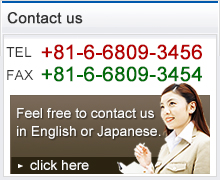3. History of Japanese Patent Attorney System
In Japan, Fukuzawa Yukichi introduced the European and U.S. patent systems for the first time in his 1867 writing "Things western."
In 1871, the Meiji government enacted the Japan’s first Patent Act "Summary Rules of Monopoly of 1871." However, it was abandoned the following year without any application filed. It is believed the reason is that invention of the time was short of the level to be granted an exclusive right and no responsible government division was thoroughly organized.
In 1884, Takahashi Korekiyo enacted the Japan’s first Trademark Act "Trademark Ordinance" and assumed the position of the Director of the Trademark Registration Office. The Japan’s first registered trademark was a trademark of plaster pills for which Hirai Yuki in Kyoto filed an application.
1885, the Patent Monopoly Act was enacted. It is said that this Patent Monopoly Act came under heavy criticism that the patent system would curb the freedom of imitation and impede the development of the domestic industry, when it was being formulated. Takahashi Korekiyo made inspections of patent systems in the U.S., France, and Germany, and subsequently assumed the position of the Commissioner of Patent Monopoly Bureau. Takahashi is said to have made surveys of patent attorneys in each country at that time, and met Mr. Earle, a prominent American patent attorney and Mr. Pataki, a German patent attorney to receive explanations on the duties of patent attorney. In 1885, 425 patent applications were filed and 99 out of those applications were granted. Hotta Zuisho in Tokyo obtained Japanese Patent No. 1 for the "Hotta type anticorrosive paint and its application method." In 1888, a patent examination principle was adopted to mandate that examiners should examine patent applications.
Also in 1888, the Japan’s first Design Act "Design Ordinance" was enacted. Sunaga Yoshibei in Tochigi Prefecture obtained Japanese Design Right No. 1 for his design for stripes in textile.
 Photo 1: Takahashi Korekiyo (Politician, held positions such as Prime Minister and Finance Minister)
Photo 1: Takahashi Korekiyo (Politician, held positions such as Prime Minister and Finance Minister)
 Photo 2: Hotta Zuisho (Sculptor, Lacquerware Craftsman)
Photo 2: Hotta Zuisho (Sculptor, Lacquerware Craftsman)In 1890, Manaka Naomichi resigned from his post as the clerk of Patent Monopoly Bureau and established "Tokyo Patent Attorney Firm" in Kanda and Tsukiji, Tokyo as an exclusive patent affairs Agency. This is recognized as the beginning of patent attorney business in Japan.
In 1899, Japan acceded to the Paris Convention. In that year, the number of patent applications in Japan was 1,515 and 224 (14.8%) out of the applications were filed by foreign nationals. The duration of a patent of the time was 15 years.
Furthermore, in 1899, the Japan’s first patent attorney system "The Regulations on Patent Attorney Registration" entered into force to establish the qualification of patent agent, a predecessor to the current patent attorney. This qualification was established in order to enhance the credibility of patent application agent in line with an increase in the number of patent applications. Japanese Patent Agent Registration No. 1 was granted to Okamura Teruhiko, an attorney in Tokyo Prefecture. In 1899, 138 patent agents were registered. Most of these patent agents engaged in attorney business as a subsidiary business and just 33 patent agents did not engage in attorney business as a subsidiary business. In 1902, the first patent attorney examination was conducted with 92 examinees and 9 out of them passed the examination.
Although the patent system was developed, the technology level of the Japanese of the time was low, resulting in the rejection of most of patent applications. Thus, the Meiji government adopted the German utility model system in 1905. The duration of a utility model right of the time was three years, and this adoption allowed the extension of the duration for another three years.
In 1909, the prohibition of undertaking patent agency business by a person who is not a patent attorney was legislated to enact penalties if the said person undertook the patent agency business. The foregoing Regulations prescribed that a person who had passed the patent attorney examination should in principle be a patent attorney. However, since persons with a university degree or graduates from any of the imperial universities or from any school in Japan and overseas equivalent thereto could be a patent attorney, only a few persons received the formal examination to be a patent attorney. Furthermore, patent attorneys did not all need to be a Japanese national, and thereby even foreign nationals could be a patent attorney if they had adequate academic qualifications.
In 1915, Japan Association of Patent Attorneys, a predecessor to the current Japan Patent Attorneys Association was established for the purpose of maintaining the morality of patent attorneys and enhancing the common interest.
In 1921, the principle of first-to-file principle and system for publication of application were adopted. In 1922, the current Patent Attorneys Association was established to prescribe that only the members of the Patent Attorneys Association were allowed to conduct the business of patent attorney. Since mandatory join in the Patent Attorneys Association was considered necessary to maintain the morality and develop the business of patent attorneys and beneficial to reciprocal supervision under autonomous control, the said principle and system were adopted after the example of the Lawyers Act. The number of members of the Patent Attorneys Association of the time was 753, and the number of registered patent attorneys was 1,477.
In 1932, the first issue of the bulletin of the Patent Attorneys Association "Patents & Trademarks" was published. In 1934, the extraordinary general meeting of the Patent Attorneys Association defined a patent attorney badge with a Paulownia flower arranged in the middle of 16 chrysanthemum petals and "Japanese Patent Association No. xx" engraved on the reverse. The chrysanthemum represents "Justice" and the Paulownia flower represents the "Prosperity of country."
 Photo 3: Current patent attorney badge
Photo 3: Current patent attorney badgeIn 1935, the first female patent attorney, Inoue Kiyoko was registered.
In 1947, the he bulletin of the Patent Attorneys Association "Patents & Trademarks", which was shut down during the War, was changed the name to "Patent" and revived. Right after the War, patent applications pertaining to food accounted for a majority of all applications. It is said that 750 applications equivalent to nearly 10% of all applications in 1946 were pertaining to salt production.
In 1954, the first volume of "Character Trademarks" was issued. In celebration that April 18 of that year just marked the 70th anniversary of the date of promulgation of the Patent Monopoly Ordinance, and further in order to promote invention and facilitate its reduction to practice, it was decided to make April 18 "Invention Day."
In 1960, the Japan Patent Office amended the Act to transfer patent attorney registration service to the Patent Attorneys Association. The "Patent Attorney Registration Ledger" and other documents pertaining to patent attorneys that had been kept in the Japan Patent Office were passed to the Association accordingly.
In 1961, an invention consultation office was set up in Tokyo Metropolitan for the purpose of stimulating willingness to invent and disseminating the patent attorney system to have patent attorneys in Tokyo Metropolitan take charge of invention consultation.


 Japanese
Japanese English
English

